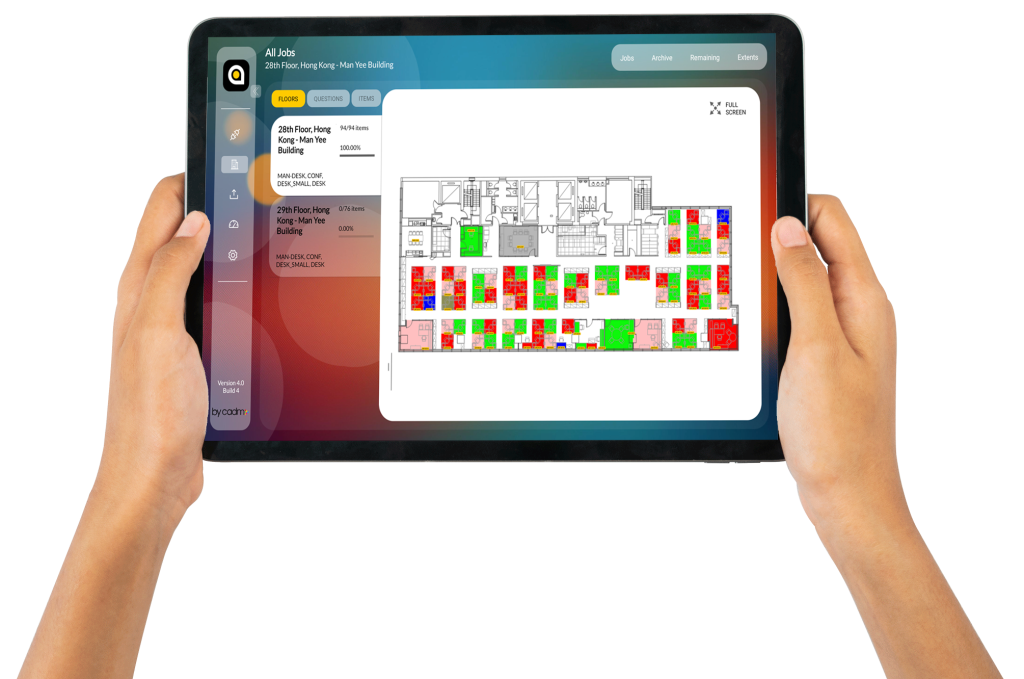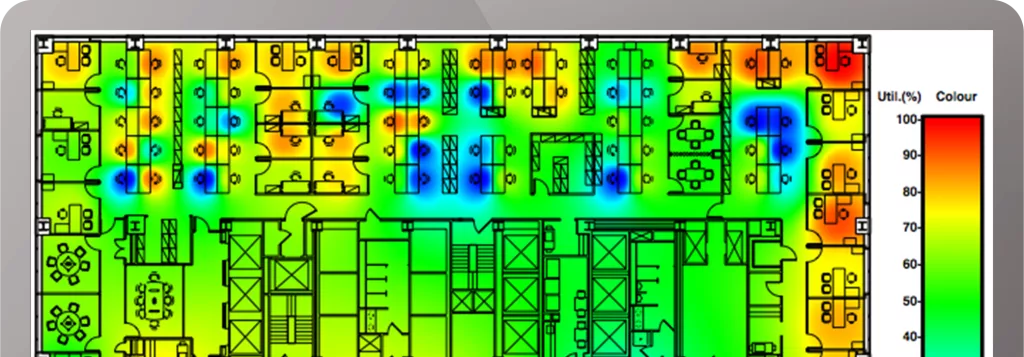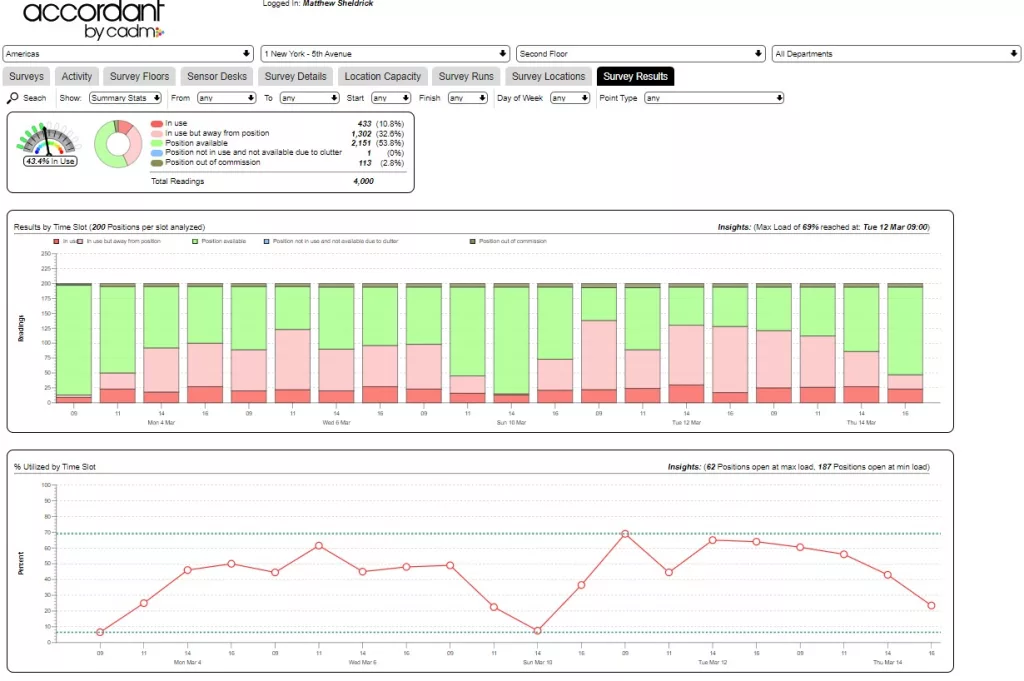Let’s be honest — most move companies are brilliant at the heavy lifting. They’re logistics experts, space planners, people wranglers, and magicians who make chaos disappear overnight. But there’s one skill that can elevate a move company from “just another vendor” to a trusted strategic partner: observation utilisation studies.
Sounds fancy, right? Don’t worry — we’re not talking lab coats and microscopes. We’re talking about something deceptively simple, surprisingly cheap, and incredibly powerful: watching how people use space. Because the truth is, before anyone boxes up a stapler or unplugs a monitor, you need to know what’s actually happening in that office.
Observation: The Unsung Hero of Smart Moves
Imagine walking into a client’s office. Rows of desks. Meeting rooms galore. A coffee machine that’s either the social hub of the building or a sad monument to good intentions. The client says, “We think we’ve outgrown this space.”
But have they? Maybe they’re only using 60% of their desks at peak time. Maybe everyone’s hybrid and the office looks full on Tuesdays but is a ghost town by Friday. Or maybe the meeting rooms are booked solid on paper but empty in reality.
This is where an observation utilisation study comes in. It’s a way to see the truth about how space is actually used, not just how people think it’s used. And when you can show a client hard data — “Look, you’re only using 42% of your desks on average” — suddenly, you’re not just a mover. You’re a consultant. A problem-solver. The hero who can save them thousands of pounds in rent, furniture, and time.

Turning Observation into Opportunity
So, how does this help move companies win more business? Simple: data builds trust.
Clients don’t just want someone who can shift desks. They want someone who can advise. When you can hand them a report showing exactly how their people use space — complete with snazzy graphs, heatmaps, and insights — you become the expert they turn to for their next move, consolidation, or redesign.
Observation studies can be the start of a bigger conversation:
- “We noticed your collaboration spaces are constantly full — maybe you need more breakout areas in your new office.”
- “Desks near the windows are used all the time, while the back rows are always empty. Let’s plan your new layout around that.”
- “Your meeting rooms are booked out but rarely used. Let’s look at flexible alternatives.”
See what’s happening there? You’ve just gone from reactive mover to strategic advisor. And that means more projects, longer relationships, and more trust.
The Beauty of Keeping It Simple (and Cheap)
Here’s the best part: you don’t need a team of analysts or fancy equipment to do it.
You already have the perfect people — your move crews. When they’re between jobs or during quieter periods, they can easily complete observation surveys. It’s low-cost, quick to set up, and adds a new revenue stream without hiring anyone new.
Think of it as turning your staff into data ninjas. They walk the space, observe what’s happening, tick boxes on a tablet, and boom — insights that would make a consultant’s eyes water. You’re literally using your existing workforce to build a new, high-value service.
And because it’s visual and immediate, it’s a fantastic upsell tool. Clients love visuals. A colourful graph or space heatmap will always get more attention than a spreadsheet full of numbers. (“Oh look, Dave, the blue areas are where no one sits! Maybe we don’t need another 200 desks after all.”)

Why Accordant Anywhere Changes the Game
Here’s where tech makes life even easier. Tools like Accordant Anywhere mean you don’t need clipboards, spreadsheets, or a pile of paper that gets lost under the van seats. Everything can be done on a tablet — quick, intuitive, and totally mobile.
Picture this:
Your staff walk through the space once an hour during office hours. With a few taps, they record how many desks are occupied, how many meeting rooms are in use, and where the action is. The data uploads instantly to the cloud. No fiddly data entry later, no lost notes, no confusion.
By the end of the day, you can already see trends forming. After two weeks, you’ve got a crystal-clear picture of exactly how that office lives and breathes. And because Accordant Anywhere creates slick visualisations — graphs, charts, and floorplan overlays — you can hand the client something that looks like it came from a high-end workplace consultancy.
You’re giving them something tangible, professional, and incredibly useful — and you’ve done it with your own team, at minimal cost.
The Magic Formula: Two Weeks, One Hour, All the Answers
So, what’s the ideal setup for an observation utilisation study? Keep it simple:
- Duration: Two weeks
- Frequency: Once every hour during standard office hours (let’s say 9 to 5)
- Focus: Desks, meeting rooms, breakout spaces, and collaboration zones
Why two weeks? Because every office has its quirks. Mondays might be quiet, Wednesdays might be buzzing, and Fridays… well, Fridays might be “work from anywhere but the office” day. A two-week snapshot smooths out the anomalies and gives a reliable picture of how space is truly used.
And doing observations hourly means you catch the ebb and flow — the lunchtime dips, the morning rush, the afternoon slump where everyone’s mysteriously in meetings (or maybe just avoiding eye contact).
By the end of the study, you’ll have:
- Utilisation percentages (how many desks are used and when)
- Heatmaps showing where people actually sit
- Peak usage times and occupancy patterns
- Meeting room behaviour (booked vs. used)
- Collaboration space insights (are they being used as intended?)
It’s a simple recipe for a big “aha!” moment.

Turning Insights Into Action (and Revenue)
Once you’ve got the data, that’s where the magic happens. Because this isn’t just about observation — it’s about storytelling. You’re showing clients what’s really going on, and what that means for their business.
For example:
- Overcrowded? You can recommend a re-stack, re-zoning, or a new move.
- Underused? You can suggest consolidating space, sub-letting, or right-sizing.
- Inefficient layouts? You can propose new configurations that improve flow and engagement.
Every insight is a conversation starter — and every conversation can turn into a move project. It’s consultative selling at its best, backed by real-world evidence.
Even better, it builds credibility. When clients see that you understand their space — not just how to move it, but how to improve it — they’ll keep coming back. You become the trusted advisor they call before making any big workplace decision.
Easy to Run, Easy to Love
Setting up an observation study doesn’t need weeks of planning or a fancy budget. It’s incredibly straightforward:
- Set your survey scope: What spaces do you want to study?
- Train your observers: Ten minutes with Accordant Anywhere and they’re ready to go.
- Plan your observation schedule: One observation per hour, per zone.
- Upload and analyse: Data goes straight into the system, ready for reporting.
- Present the findings: Show the client their data with visuals that tell a story.
That’s it. No PhD in data science required, no massive time sink. Just smart observation and smarter technology.
The Human Touch Still Matters
Here’s the thing — observation studies aren’t just about data. They’re about empathy. You’re not counting chairs; you’re understanding people. The way they move, collaborate, and occupy space says a lot about culture, comfort, and productivity.
When you combine that human insight with data, it’s powerful. You can spot patterns that sensors can’t. You notice the team that always commandeers the same corner for brainstorming. You see the desk that’s always empty because it’s under the world’s coldest air vent. You hear the informal feedback that makes your report richer and more relatable.
That’s something only a human observer — ideally one who already understands the workplace environment — can do. And that’s exactly who your move staff are.
Low Cost, High Reward
Let’s be blunt: this is one of the highest-ROI services a move company can offer.
- Cost: Minimal. You’re using existing people and tablets you probably already own.
- Setup: Easy. Accordant Anywhere does the heavy lifting.
- Value: Huge. Clients get clarity, you get credibility, and everyone wins.
Even if you only run one or two observation studies a month, it can easily become a steady, profitable side service. And as the data builds, so does your reputation — as the company that knows space, not just moves it.
Seeing the Bigger Picture
Observation utilisation studies aren’t just a side hustle. They’re the foundation for future-ready workplace thinking. As hybrid work evolves and companies question how much space they really need, being able to show them the truth — with evidence, visuals, and insights — is gold.
For move companies, it’s the next natural step. You already understand buildings, people, and logistics. Now you’re adding data and storytelling to the mix. It’s a simple way to move up the value chain — from the hands that move furniture to the minds that shape strategy.
Final Thought: The Power of Watching
In a world obsessed with sensors and software, sometimes the most powerful insight comes from simply looking. Watching. Noticing. Observing.
That’s what observation utilisation studies are all about — seeing what’s really there. It’s cost-effective, it’s clever, and it’s the perfect way for move companies to prove they understand the modern workplace better than anyone else.
So grab a tablet, open Accordant Anywhere, and start watching. You might just see your next big business opportunity walk by on its way to the coffee machine.